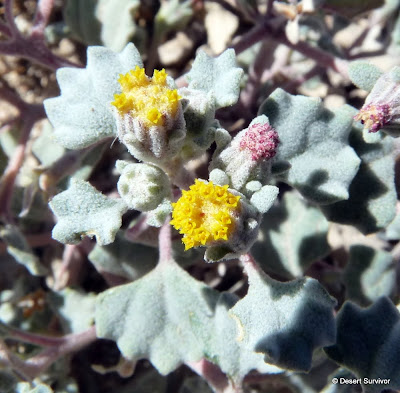 One of the common names for this plant is saltlover (Halogeton glomeratus); its genus name Halogeton is Greek for salt neighbor, and is often used as the common name. It's nonnative, found in salty soils, and is considered in many areas to be a noxious weed. It grows throughout much of the western U.S. It concentrates sodium oxalate and is poisonous to livestock.
One of the common names for this plant is saltlover (Halogeton glomeratus); its genus name Halogeton is Greek for salt neighbor, and is often used as the common name. It's nonnative, found in salty soils, and is considered in many areas to be a noxious weed. It grows throughout much of the western U.S. It concentrates sodium oxalate and is poisonous to livestock. The stems are often red, and the flowers are small and inconspicuous.
The stems are often red, and the flowers are small and inconspicuous.For more info on saltlover, click here.















